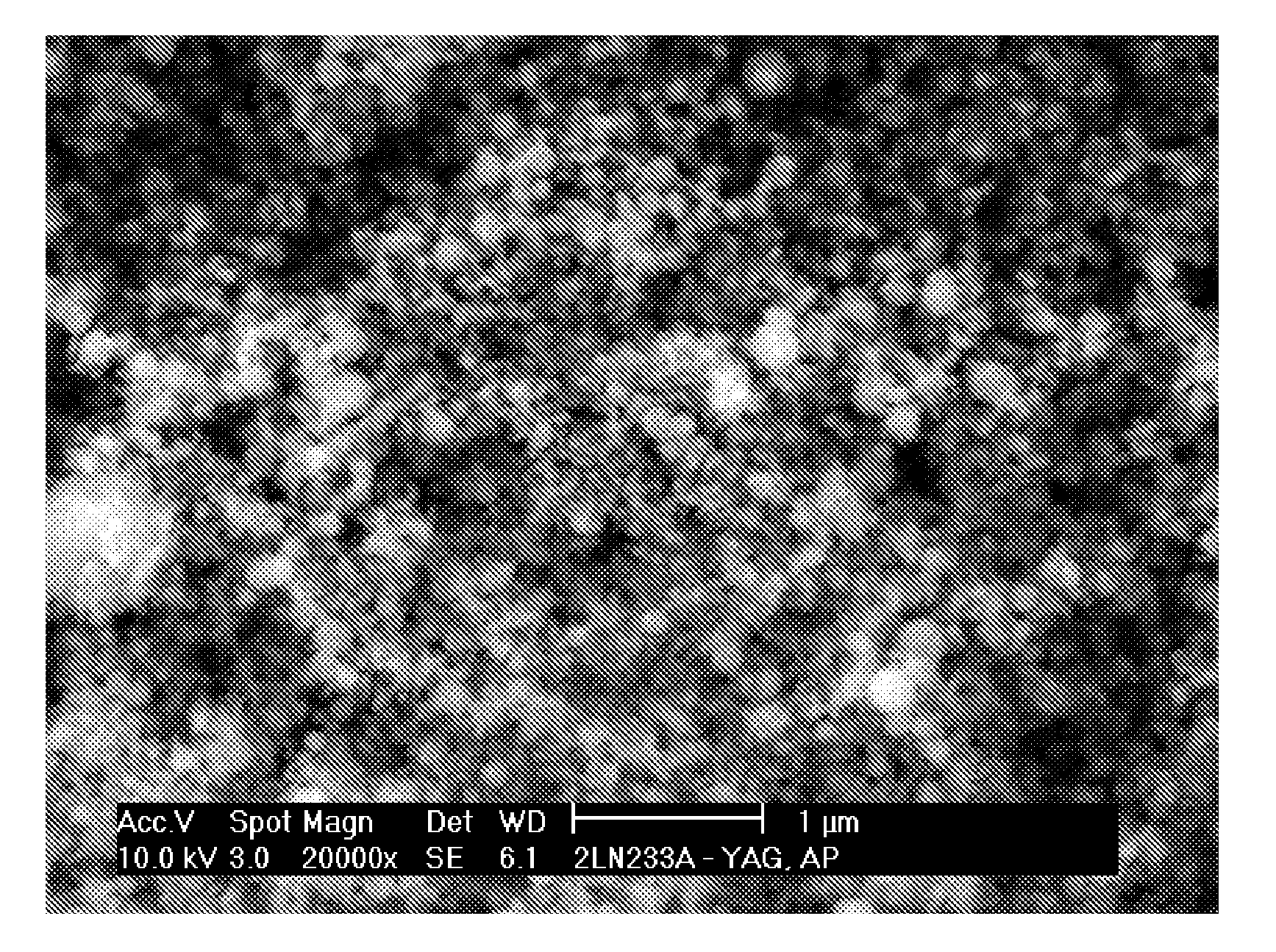Sintered polycrystalline yttrium aluminum garnet and use thereof in optical devices
a technology of yttrium aluminum garnet and yttrium aluminum, which is applied in the field of polycrystalline yttrium aluminum garnet, can solve the problems of difficult to produce large-scale yag single crystals to satisfy many use applications, difficult to synthesise transparent yag ceramics, and high cost of yag single crystals, so as to achieve high yag transparency, reduce impurity loading, and reduce the effect of impurity loading
- Summary
- Abstract
- Description
- Claims
- Application Information
AI Technical Summary
Benefits of technology
Problems solved by technology
Method used
Image
Examples
example 1
Yttrium Propionate Precursor Synthesis
[0057]A typical procedure begins with putting 100 g Y2O3 in a 2 L round-bottom flask. 1000 g propionic acid is added to the flask with 100 g acetic acid and 50 g water. The flask is put into a mantle and the solution is heated to reflux. Usually it takes 18 to 24 hours until the solution is clear, indicating that all yttrium oxide is dissolved to form a soluble propionate. After cooling down, the solution is used immediately or stored in a closed container for later use.
example 2
Lanthanum / Neodymium Propionate Precursor Synthesis
[0058]Into a 2 L round-bottom flask 100 g La2O3 or Nd2O3 or a combination thereof is added. 1000 g propionic acid is added into the flask as well as 100 g water. The flask is put into a mantle and the solution is heated to reflux. Usually it takes 2 to 8 hours until the solution is clear, indicating that all La2O3 or Nd2O3 or a combination thereof is dissolved to form soluble propionates. After cooling, 100 g of ethyl hexanoic acid (EHA) is added to stabilize the solution. The solution is used immediately or stored in a closed container for later use.
example 3
Gadolinium / Erbium / Thulium / Ytterbium / Lutetium Propionate Precursor Synthesis
[0059]Into a 2 L round-bottom flask 100 g Gd2O3 or Er2O3 or Tm2O3 or Yb2O3 or Lu2O3 or a combination thereof is added. 1000 g propionic acid is added into the flask as well as 100 g water. The flask is put into a mantle and the solution is heated to reflux. Usually it takes 50 to 80 hours until the solution is clear, indicating that all the Gd2O3 or Er2O3 or Tm2O3 or Yb2O3 or Lu2O3 or a combination thereof is dissolved to form soluble propionates. After cool down, 100 g of ethyl hexanoic acid (EHA) is added to stabilize the solution. Then the solution is used immediately or stored in a closed container for later use.
PUM
| Property | Measurement | Unit |
|---|---|---|
| Fraction | aaaaa | aaaaa |
| Percent by mass | aaaaa | aaaaa |
| Percent by mass | aaaaa | aaaaa |
Abstract
Description
Claims
Application Information
 Login to View More
Login to View More - R&D
- Intellectual Property
- Life Sciences
- Materials
- Tech Scout
- Unparalleled Data Quality
- Higher Quality Content
- 60% Fewer Hallucinations
Browse by: Latest US Patents, China's latest patents, Technical Efficacy Thesaurus, Application Domain, Technology Topic, Popular Technical Reports.
© 2025 PatSnap. All rights reserved.Legal|Privacy policy|Modern Slavery Act Transparency Statement|Sitemap|About US| Contact US: help@patsnap.com



